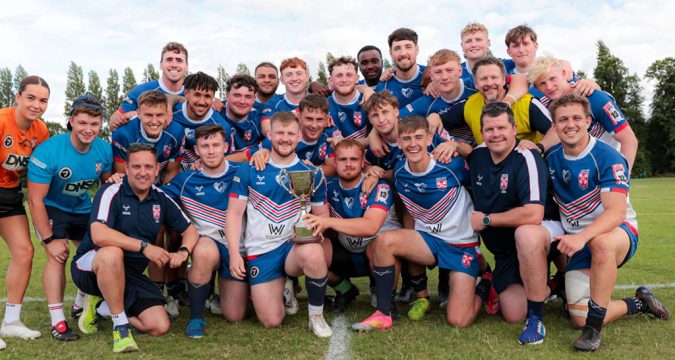 CONGRATULATIONS to England on retaining the Student Rugby League’s Four Nations Trophy.
Head coach Adam Houston’s side have added the prestigious silverware to the President’s Cup (just as they did last year) having beaten Ireland, Scotland and Wales in the Four Nations, and Great Britain Teachers and UK Armed Forces in the earlier event.
CONGRATULATIONS to England on retaining the Student Rugby League’s Four Nations Trophy.
Head coach Adam Houston’s side have added the prestigious silverware to the President’s Cup (just as they did last year) having beaten Ireland, Scotland and Wales in the Four Nations, and Great Britain Teachers and UK Armed Forces in the earlier event.
Talking Grassroots: England Students pass Four Nations test with flying colours
 CONGRATULATIONS to England on retaining the Student Rugby League’s Four Nations Trophy.
Head coach Adam Houston’s side have added the prestigious silverware to the President’s Cup (just as they did last year) having beaten Ireland, Scotland and Wales in the Four Nations, and Great Britain Teachers and UK Armed Forces in the earlier event.
CONGRATULATIONS to England on retaining the Student Rugby League’s Four Nations Trophy.
Head coach Adam Houston’s side have added the prestigious silverware to the President’s Cup (just as they did last year) having beaten Ireland, Scotland and Wales in the Four Nations, and Great Britain Teachers and UK Armed Forces in the earlier event.
